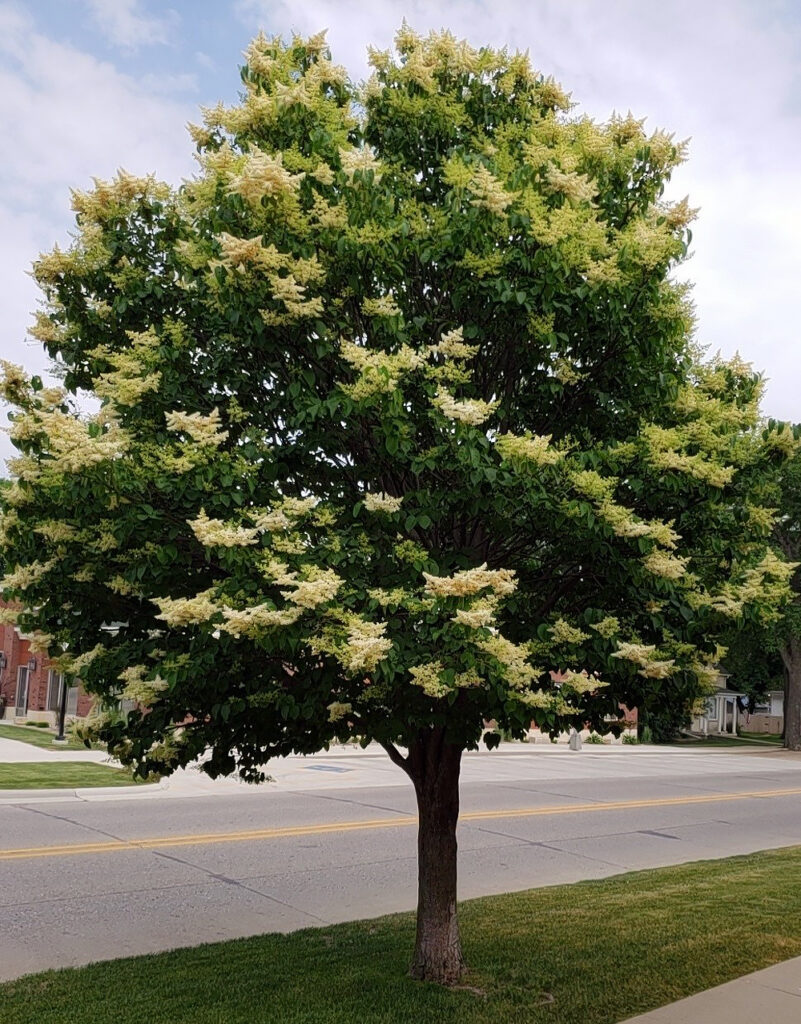Clippings – A column from ISU Extension and Outreach

by Beth Doran– ISU Master Gardener
If you think the Japanese Tree Lilac is a traditional lilac, you are in for a surprise. Apart from a similar fragrance, it is quite different.
Unlike a shrub lilac, the Japanese Tree Lilac (Syringa reticulata) is an oval- to round-shaped tree measuring 20-30 feet tall with a spread of 15-25 feet.
This small tree has fragrant, creamy white flowers which bloom in upright panicles up to 12” long from early- to mid-June. After blooming, the tree forms small, green and yellow fruit clusters. The clusters do not attract wildlife, and they pose no significant litter problem.
The Japanese Tree Lilac is native to Northern China, which explains its hardiness in Zone 3. It is also noted for smooth, dark cinnamon-colored bark. The dark green leaves are resistant to powdery mildew, but they have no fall color change.
There are several cultivars of Japanese Tree Lilac – Ivory Silk, Chantily Lace, Regent, and Summer Snow. Ivory Silk is noted for flowering well when young and having a more compact growth habit.
Note that the Japanese Tree Lilac grows best in full sun with well-drained soils but can be grown in clay soils. When located on an appropriate site, there are few serious insect or disease problems. It is often used as a hedge, street tree, or flowering tree.
If you want showy blooms, fragrance, and an unusual tree, the Japanese Tree Lilac excels. And another bonus…this tree attracts hummingbirds and butterflies!
For more information on trees, ISU Extension and Outreach has a publication “Landscape Plants for the Midwest” that can be downloaded from the Extension Store at https://store.extension.iastate.edu/product/3908. This collection of plant lists is organized by plant type and size. The growth, flowering, and fruit characteristics of each entry are described.
